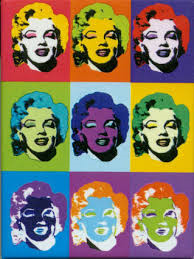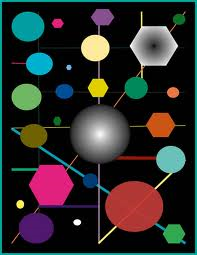Unity/Harmony-the means by which a composition is made whole, or is unified. Less a collection of unrelated forms, there is something that ties all the forms together. Unity is the means by which a composition is held together as a cohesive whole.
Rhythm-often uses the repetition of objects or shapes in ever-changing form to create a form of visual energy. Rhythm is closely aligned to Movement and Repetition. Rhythm is a very energetic Principle of Design.
Movement-achieved by using line and shape to move your eye through a composition. Movement will draw the eye inward or outward, depending on what the artist intended, with the use of line and shape. Movement will most often give a work a sense of dynamism or energy.
Balance-is amazingly varied. Formal Balance is where objects are placed along a central axis. Informal balance is where objects are not aligned in this way, but they still balance each other out. Balance can also be radial with examples such as flowers, webs, and stars.
Repetition-can be expressed in colour, shape, line, or form, and is closely tied to rhythm as well as movement. The key to repetition-it repeats.
Dominance/Emphasis-this principle of design can be achieved by creating a contrast in form, colour, line, or even texture for the purpose of drawing the eye to one compositional element within a work.
Contrast-which is similar to Dominance/Emphasis, relies on differences to achieve an effect or result. It can be a contrast in line, shape, colour, or even placement.
Variety-can be expressed through size, shape, colour, or texture and/or all of these. Variety keeps your eye engaged in a work.









I like it!
LikeLike